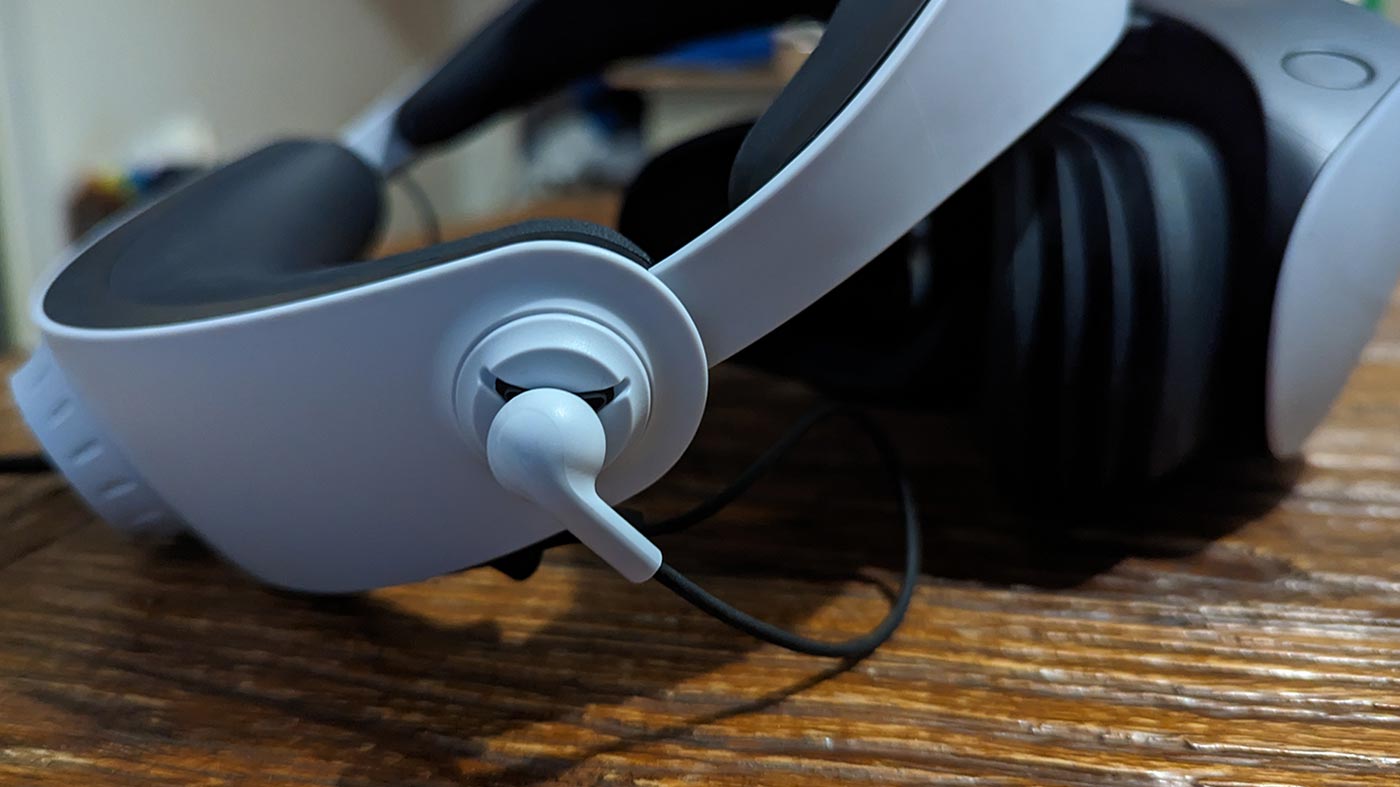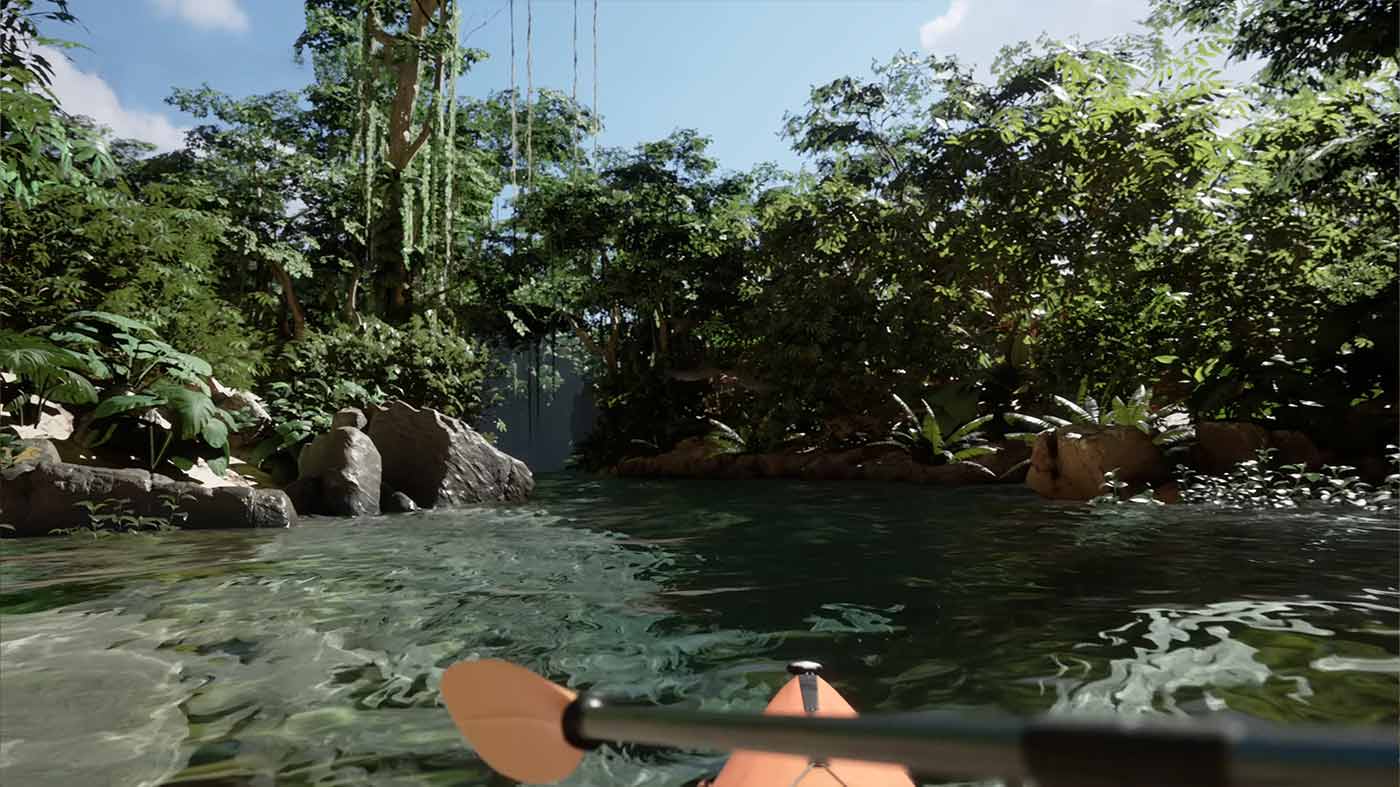When the original PlayStation VR arrived back in 2016, it shot into the then-burgeoning virtual reality market with hardware that was comfortable, accessible and – most importantly – affordable in comparison to its peers. That turned out to be the right move at the time, with the headset carving out a decent little piece of the VR market pie and commanding a decent amount of staying power in the years to come.
Fast forward almost seven years and the landscape is a little different for virtual reality tech. With high-end VR maturing and entry-level headsets like the Meta Quest 2 offering compelling, completely untethered VR experiences at a relatively modest price point there’s a lot more for PlayStation to prove with its follow-up effort. Dropping a little earlier into the life of the hardware it’s tied to and at a higher price point, the PlayStation VR2 feels like serious business in comparison to its predecessor. Sony successfully dipped its toes into the virtual waters and now it wants to swim with the sharks. It’s a good thing then, that the PS VR2’s teeth are as razor sharp as its visuals.

I went over a lot of this in my initial unboxing impressions (which you can read here) but it bears repeating – this is easily the most attractive, comfortable and well-constructed VR headsets I’ve used to date.
To begin with the headset itself is around 50g lighter than the first PS VR, but it’s also unburdened by the mess of cables and breakout boxes that made the previous iteration feel far bulkier than it actually was. This time around, there’s no extra box or HDMI passthrough or any of that junk. It’s just a single USB-C cable for the front of your PS5. A very, very long 4.5m USB-C cable that’s also surprisingly light and definitely will have enough give for most people to unknowingly wrap themselves in it a few times during play without any disaster striking.
THE CHEAPEST PRICE: $878 AT AMAZON WITH FREE SHIPPING.
Compared to the original PS VR’s IKEA-like setup, being able to simply take the thing out of the box, pop the cable into the front of the console and get playing is remarkable. I was worried that, having also used a Quest 2 quite a bit, the added cable would become an annoyance but I can’t say that I’ve even registered its existence more than once or twice during the time I’ve been playing.

Putting the headset on is a breeze, as well. Not a whole lot has changed from the last one, which is absolutely a good thing when that design was already fantastic. The headset is incredibly adjustable so once you slip it over your head by holding the button at the back and stretching it to accommodate your noggin, you simply spin a dial to tighten it up and then manoeuvre the front visor until it’s sitting comfortably in front of your eyes. Even with my fairly large glasses on I never once felt they were being pushed up against my face, with plenty of wiggle room. Crucially, the design of the rubber blinders around the lenses blocks out a ridiculous amount of ambient light.
Setting up the PS VR2 on the software side of things is also refreshingly easy and intuitive, with the headset’s mounted cameras and eye tracking technology doing a ton of the legwork. You’ll configure your play space simply by looking around you while it intelligently maps out walls, floors and any objects in the vicinity and creates a virtual boundary to keep you from punching nearby furniture in the heat of the moment. It’s in this step that you’ll also find out whether you’ve got the minimum required 2m x 2m clearance for “room scale” VR gameplay (essentially being able to physically move around a virtual space) or, if you live in an inner-city single bedroom apartment like me, are restricted to just the stationary standing/sitting experience.

One of the PlayStation VR2’s most interesting tricks, its eye tracking tech, also helps immensely with the initial setup by giving you an on-screen guide to how well-positioned the lenses are in relation to your pupils. With a combination of adjusting the position of the visor and turning the super-handy lens distance dial on the top of the visor you can very quickly get things looking just right for your eyes. Having eye tracking also enables the headset’s “foveated rendering” tech, which essentially allows games to render better detail in areas where you’re actively looking and dynamically scale back detail in areas you’re not – lending to better perceived visual quality and performance overall.
I can’t overstate how great the PlayStation VR2’s configuration and calibration process is in comparison to pretty well every other VR headset I’ve used. With just about any guesswork eliminated by the intelligent combination of hardware and software working together, I never once had to wonder whether I was getting the optimal experience.

Something I’ve been incredibly grateful for in my time with the PS VR2 is the ability to use its front-facing cameras as a window to the world outside of the headset. The surprisingly clear, black-and-white view is easily accessible just by pushing the Function button on the underside of the front visor which makes it easy to quickly reassess where you’re physically positioned in the room and if you’ve begun edging too close to a wall or bit of furniture, locate any controllers or people around you or even quickly jot down PlayStation VR2 review notes in your phone without having to remove the headset at all.
With the headset on and configured, one of the most immediately noticeable upgrades here is the pair of super-sharp 4K (2000 x 2040 per-eye) HDR OLED displays that represent a massive jump from the first PS VR and up there with some of the best resolutions that VR headsets have to offer. Aside from raw pixel count, the displays in the VR2 offer a fairly substantial 110 degree field of view and very decent brightness and colours. I’ve been particularly impressed with how little interference there is from the typical VR display issues like distortion and glare, with minimal god rays or “screen door” effect. It’s not completely without fault, there’s still a degree of softness to fine details like text and a bit of motion blur but overall it’s far superior to the likes of the Quest 2.

In the cinematic view, where the headset shows the regular PS5 home menu or any “flat” games or movies you might want to check out, is where I’m probably least inclined to choose the PS VR2’s display over simply using my OLED telly. The novelty of a floating cinema-esque screen in a virtual void that only you can see is novel enough if it’s your first time trying it out, but as sharp as the displays are for VR gaming they’re not quite fit for lengthy play sessions of regular titles.
RELATED: OUR HORIZON CALL OF THE MOUNTAIN REVIEW
One of my favourite inclusions, somewhat surprisingly to me, is the little in-ear headphones that come with the PS VR2. I’ll always opt for over-ear cans where possible, and fully expected to be opting for a slightly-awkward combo with my usual gaming headset, but I’m glad I gave these a go. For starters, they come attached to a little plastic bar that sits snugly into the back band to allow the buds to hang in just the right spot for the ears with no extra slack, and the headset even has a mounting port on each side to pop them into when you’re not using it.
They also sound great for an in-ear solution, with my playthrough of Horizon Call of the Mountain coming through with a good amount of crisp detail and juicy bass. Combined with the 3D audio processing and minimal physical interference it makes for a genuinely immersive audio experience out of the box – far and away more than I expected from some packed-in earphones.

The next piece of the hardware puzzle comes from the included Sense controllers. It’s hard to believe we ever made do with Sony’s decision to repurpose the godawful PS3 Move controllers for the original PlayStation VR, much less that they saw fit to sell them separately to the headset itself. Sure, it made the starter kit cheaper but having to tack on an extra $200ish to get a pair of Moves and the required camera on top sucked the joy out of that value proposition. We’re off to a much better start this time around with the controllers included in the box and no extra camera bits needed.
The Sense controllers a far more logical and comfortable design this time around, their hollow orb-like design ergonomically tailored to each hand to ensure every button is within reach and easy to read without the benefit of being able to see them, with your fingers naturally positioning around the analogue sticks, L1/R1 bumpers and L2/R2 triggers. It’s kind of like wearing a pair of sci-fi gloves with their stark black and white, orb-like design and I’m here for it. If you’ve used the Quest controllers in the past, the idea is similar here but a definite improvement again.

The Senses also pack in some especially neat features to bring a new level of immersion (and hopefully some neat future gameplay possibilities) to the table. Much like the PS5’s standard DualSense controller, they boast detailed haptic feedback along with adaptive triggers to simulate the feelings of your actions in games, something that Horizon Call of the Mountain uses to great effect. Being able to feel the difference between grabbing onto a rope and a stone ledge, or the tension of a bowstring that I’m pulling in real time adds a ton of immersion and really helps to remove the disconnect in your brain when grabbing or touching things in the virtual world isn’t mirrored in the physical realm. There are even haptics in the headset itself which are used to pretty good effect in games like Horizon and Thumper so I’m keen to see and feel more of that.
Something I’m hoping developers latch onto early and often is the finger tracking, which senses whether each of your fingers are gripping the controller to somewhat represent any in-game hands as close to your actual hands as possible. It’s fairly simplistic in what it understands about the positions of your fingers but being able to wave or throw up peace signs in something like Call of the Mountain is fun nonetheless. I’d be keen to see Sony work in some full hand-tracking ala the Quest 2 with potential software updates but for now what’s here could be used to decent effect.

With the cameras mounted into the front of the PS VR2’s visor, inside-out tracking means that not only is the whole thing a lot more simple to set up and use, it’s freakishly accurate and truly feels 1:1 at all times. Having spent a ton of time with the original PS VR I can’t overstate how wonderful it is to have motion controllers that are genuinely responsive and reliable, though that’s not to say the Senses are totally infallible. Lighting and environment are still crucial to getting the best experience, with everything performing its best in a well-lit space with as few errant lights and reflections as possible.
While the overwhelming majority of my PS VR2 gameplay has been smooth sailing, I did notice that the reflection of my overhead lights on wooden floors or even the video output on my TV could often throw the cameras in my headset off. There’s an option in the settings to add a distinct border to the social screen so that the headset knows it’s looking at a TV which pretty much sorted that issue, but if you were hoping to get in some VR action with the Sense controllers in a dim or busy room you might have less luck – the system flat-out told me to go somewhere brighter when I tried to play at night with my lights off.

The other slight issue that was a constant in my PS VR2 experience was the 4-5 hour battery life of the Sense controllers. Granted, not many people are going to be playing VR titles for that long at a time, but it means that forgetting to charge them between sessions will very quickly kill the joy – especially considering that you only get one charging cable in the box. I’m sure most people will have at least one spare USB-C cable around the house but when the low battery notification specifically advises I charge both controllers together I can’t help but wonder if Sony’s hoping to subtly push people towards the $80 dual charger.
Of course, the thing that so many new gaming devices will live or die by is the quality of the available software, and the launch line-up is of particular importance when considering whether to drop north of $800 on an add-on to an already-expensive console. In this regard, the PS VR2 is doing just fine with a number of big ticket inclusions like Horizon Call of the Mountain, which is bloody excellent (you can read our review here), as well as free VR updates for games like Gran Turismo 7 and Resident Evil Village (which we haven’t been able to try just yet). Those three not only represent the “AAA” shelf in the PS VR2’s virtual suite, but they’re titles you won’t find on any other VR platform.

The rest of the VR2’s day one catalogue consists largely of games that have already graced the original PlayStation VR or other platforms like the Quest, meaning there’s maybe a little less excitement in the mix for VR veterans, but the upside is that it’s largely all top-notch stuff. The opportunity to play the likes of Moss/Moss Book II, Tetris Effect: Connected, Pistol Whip, After The Fall and other essential VR reading with the class-leading experience offered by the PS VR2 and the power of the PS5 is certainly not without merit.
The real test will be the long term, and how well the system is supported by exclusive titles and experiences not available on other, cheaper headsets. The hardware is exemplary, but if Sony wants players to hand over their credit cards past the initial period of launch excitement they need to compel them with equally exciting software.
The PlayStation VR2 releases on February 22nd, 2023.
PLAYSTATION VR2 PRE-ORDER LINKS:
- PlayStation VR2 Standard Kit – $878 with free shipping
- PlayStation VR2 Horizon Call of the Mountain Bundle – $958 with free shipping
- PlayStation VR2 Charging Station – $79 with free shipping
Lastly, if you’re looking for some quick recommendations for launch titles, we’ll have a more comprehensive rundown of our favourites over the coming days, but for now the standouts in the 15-ish games out of the launch line-up that I’ve had the time to play are:
The Best PlayStation VR Launch Games (So Far)
- Horizon Call of the Mountain
- Moss/Moss Book II
- Thumper
- Kayak VR: Mirage
- Cosmonious High
- Tentacular
- Song in the Smoke Rekindled
- Pistol Whip
- Tetris Effect: Connected
- Rez Infinite




